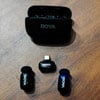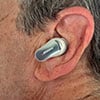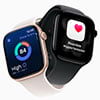Last week's big Amazon Web Services (AWS) outage took down a plethora of sites and services for several hours. It's a reminder that the internet can't be taken for granted. The big web-hosting companies – AWS, Google Cloud, and Microsoft Azure – have all experienced outages in the past and could again. Individual sites also have outages due to their own tech glitches or even hacks. Your home or office internet can go down, and you can stray outside your cellular coverage. In today's world of online apps and services, any of these issues can waste your time, stop work, or even get you lost (if using GPS).
You can't download the whole internet onto your computer, phone, or tablet. But you can sync the most important information for things you need right now, so you're not stuck the next time cloud apps go offline. Here's how to sync popular office software, cloud storage, and navigation apps on Windows, macOS, Android, and iOS.
Google Docs, Sheets, Slides, and Drive
Windows, macOS
In the Google Chrome or Microsoft Edge browser, install and turn on Google Docs Offline Chrome extension.
Open Google Drive in your browser (not in private browsing mode), and at the top right click > Gear icon > Settings > Offline.
Click the three dots to the right of any file name and then click Make available offline.
To sync the entire contents of your Google Drive, first check that your computer has enough storage space. Then, back in the Google Drive web page, click the Gear icon > Get Drive for desktop. Or visit the download page, where you can find the desktop and mobile apps. Install and start up the app. Follow the prompts. Once you’re logged in to your Google Account, you can choose which folders to sync with Google Drive on your computer.
Android/iOS
In the Drive mobile app, tap the three dots next to a file or folder, then turn on "Make available offline."
Microsoft OneDrive
Windows, macOS
In Windows, open the built-in OneDrive app. In macOS, download and install it from the App Store. Log in to your Microsoft account. Again you will be asked if you want to sync all files. If so, click OK, if not don't give permission. Then go to the OneDrive folder in Windows or macOS, right click any file or folder you would like to sync, and select Always Keep on this Device.
Android/iOS
In the OneDrive mobile app, click the three dots next to a file or folder and turn on "Make Available Offline."
Read more: Google Challenges Copilot with AI Search App for Windows
Dropbox
Windows, macOS
Click Dropbox in your taskbar (Windows) or menu bar (Mac).
Click your profile picture or initials and then Preferences > Sync > View folders. Place a checkmark next to any folders you would like to sync on your computer.
Android, iOS
In the mobile app, tap the three dots to the right of any file or folder, then turn on "Make available offline."
Read more: How to Download Your Pictures, Posts and Other Data from Facebook
Navigation Apps
Google Maps: Android, iOS
Tap your profile photo or initials > Offline maps > Select your own map. Pinch and zoom to get the entire area you will be traveling in view, then click "Download." Even when offline, you can get directions to any location in that map area.
Apple Maps: iOS
Pinch and zoom to display the area you will be traveling in. Hold your finger anywhere on the map until a pop-up appears and click "Download."
Read next: This App Alerts You When Major Sites Go Down
[Image credit: Sean Captain/Techlicious via ChatGPT]
















